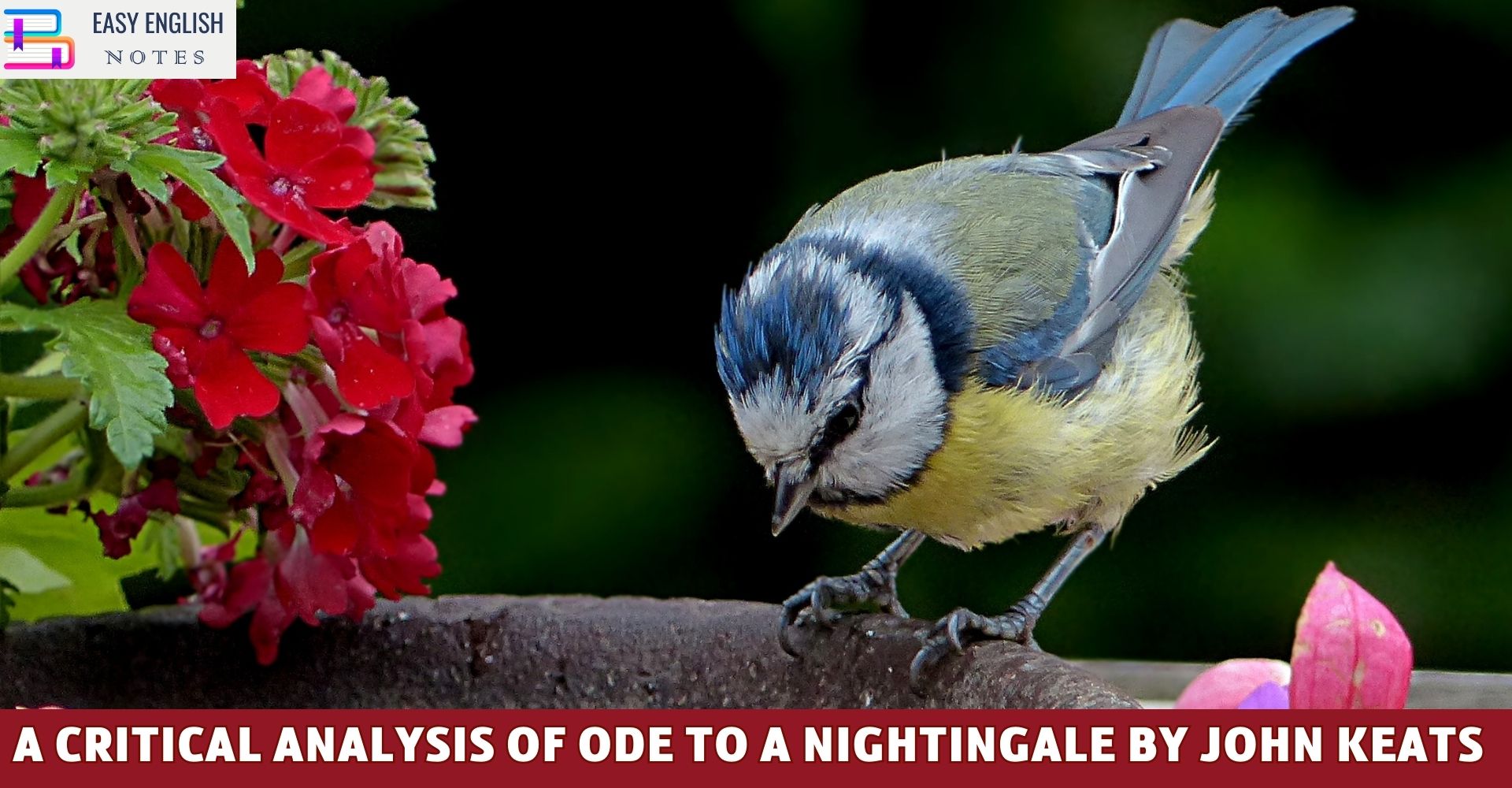Although ‘Ode to a Nightingale’ may not be considered Keats’ ultimate masterpiece, it undoubtedly stands as the greatest of his odes, encapsulating a profound and philosophical idea. Within its verses lies the idea that escaping the harsh realism of life is a near impossibility. Keats employs the symbol of the nightingale as not merely a song-bird, but as the embodiment of perfect and serene happiness—the Beauty that he passionately yearned for but never truly possessed.
In this poem, Keats confronts a complex and intricate philosophical problem that has perplexed many a troubled thinker: Can Fancy, the realm of imagination, offer an escape from the worries and pains of the realistic world? Can one, living in a material world burdened with cares and anxieties, forget its stern realities? Keats responds eloquently: “Fancy cannot cheat so well As she is famed to do, deceiving self.”
Throughout the ode, a keen sense of life’s tragedy and forlornness permeates the lines: “Where Beauty cannot keep her lustrous eyes, Where men sit and hear each other groan; Where youth grows pale and spectre-thin and dies.”
Seeking refuge from this oppressive feeling, Keats finds solace in the rapturous song of the nightingale, singing with complete ease. The tempo of this ecstatic feeling quickens until it transports the poet beyond the confines of ordinary human experience, leading him to contemplate a romantically alluring death: “To cease upon the midnight with no pain, While thou art pouring forth thy soul abroad In such an ecstasy!”
In the flight of his romantic fancy, he envisions enchanted and perilous seas, “Faery lands forlorn,” where the spirit of Romance thrives, offering ideal happiness that consoles sorrowful hearts throughout the ages.
The ode’s structure is perfectly crafted, with each stanza comprising ten lines, densely packed with expressive phrases. Its words flow irresistibly, evoking a sense of spontaneity akin to the nightingale’s own melody, delivered in full-throated ease.
Keats displays his mastery of creating picturesque scenes, beautifully painting a vivid picture of the night and the moon’s serene presence: “Tender is the night, And happily the Queen-moon is on her throne, Clustered around by all her starry Fays.”
The poem garners great admiration from scholars. Prof. Palgrave lauds it as one of Keats’ six or eight nearly perfect poems, exclaiming that its style could hardly be improved upon. Sidney Colvin, on the other hand, describes it as an exceptionally rich and satisfying display of imagination, with absolute felicity of phrases and cadence in the contrasted stanzas, evoking the allure of Southern wine, depicting the frailty and wretchedness of humanity on this earth, and conjuring the diverse odors of Spring in the embalmed darkness. Truly, ‘Ode to a Nightingale’ remains an unforgettable work of art that stands the test of time.
Also Read :
- Compare Hamlet with Macbeth, Othello and other Tragedies
- “The Pardoner’s Tale” is the finest tale of Chaucer
- Prologue to Canterbury Tales – (Short Ques & Ans)
- Confessional Poetry – Definition & meaning
In this ode, Keats delves deep into the soul’s yearning for escape and its fascination with the immortal spirit of Romance embodied by the nightingale. The poet skillfully weaves together themes of beauty, sorrow, and the fleeting nature of existence.
As Keats contemplates the nightingale’s song, he grapples with the question of whether human imagination, in all its fanciful glory, can truly offer an escape from life’s harsh realities. The nightingale’s melodious tune seems to promise such a refuge, but Keats acknowledges that Fancy, as powerful as it may be, cannot truly deceive the self. The underlying melancholy of life remains inescapable.
Yet, the nightingale’s song exerts a mesmerizing influence on Keats, transporting him to a realm of rapturous joy. As the poet becomes lost in the bird’s song, he envisions a romantic death—drinking in the bliss of the nightingale’s music, unburdened by pain or the weight of mortal existence. Keats’ imagination carries him to enchanted lands and mysterious seas, where the spirit of Romance, eternal and alluring, casts its spell.
Despite the allure of this fanciful flight, the poem eventually returns to the somber reality. The nightingale’s song fades away, leaving the poet wondering whether he is awake or lost in a dream. The ephemeral nature of the nightingale’s enchantment and the transient beauty it represents resonate deeply with Keats’ understanding of life’s fleeting moments.
Throughout the ode, Keats exhibits his unparalleled ability to create vivid and evocative imagery. Each stanza is a masterpiece, composed with precision and grace, drawing the reader into the enchanting world of the nightingale’s song. The words flow like music, as Keats’ verses mirror the bird’s full-throated ease.
In crafting this ode, Keats not only captures the allure of the nightingale’s song but also delves into the profound complexities of human existence. He unveils the yearning for a realm beyond the harsh realities of life, seeking solace in the fleeting beauty of nature and the timeless spirit of Romance.
In conclusion, ‘Ode to a Nightingale’ stands as a poetic masterpiece, showcasing Keats’ unparalleled skill in portraying the human experience through vivid imagery and profound philosophical contemplation. Its themes of beauty, escape, and the eternal spirit of Romance continue to captivate readers across generations, making it an enduring treasure in the world of literature. The poem’s enchanting verses, like the nightingale’s song, resonate deeply with the human soul, inviting us to explore the boundless realms of imagination and the poignant realities of life.
PLEASE HELP ME TO REACH 1000 SUBSCRIBER ON MY COOKING YT CHANNEL (CLICK HERE)











